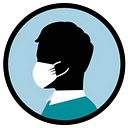Sleep Paralysis: What You Need To Know
Is sleep paralysis a sleeping disorder that needs attention?
A literature report published by Mitchell first described what sleep paralysis is after observing it in two healthy male adults in 1876. [1]
Since then, several researchers have published their reports to reveal the association of sleep paralysis with other sleeping disorders, particularly narcolepsy and cataplexy.
In this article, we will discuss the meaning, types, symptoms, causes, and treatment for sleep paralysis.
Content Navigation
- Meaning of sleep paralysis
- Types of sleep paralysis
- Symptoms of sleep paralysis
- Causes of sleep paralysis
- Treatment for sleep paralysis
- Final thoughts
What Is Sleep Paralysis?
Sleep paralysis is a condition that involves the inability to move limbs, speak and open eyes on awakening or when falling asleep.
This condition occurs for a short period, often a few seconds, but rarely a few minutes, either in isolation (known as Isolated Sleep Paralysis) or in association with several neurological diseases, for example, narcoplesy.
Narcolepsy can occur with or without cataplexy and is described by uncontrollable daytime sleepiness, in addition to sleep paralysis and hypnagogic hallucinations caused by the brain’s inability to regulate sleep.
Common Types of Sleep Paralysis
Sleep paralysis manifests in two forms based on the state of sleep.[2]
- Hypnagogic Sleep Paralysis (predormital) happens when you cannot move your body, speak, or open your eyes while you are falling asleep. This type is more prevalent than the post-dormital.
- Hypnopompic Sleep Paralysis (postdormital): A typical sleeping session has the body alternating between NREM (non-rapid eye movement) sleep and REM (rapid eye movement). In hypnopompic sleep paralysis, a feeling of being unable to move or speak occurs on awakening, shortly before the REM cycle finishes.
What Are The Noticeable Symptoms?
A study of the effect a single episode of sleep paralysis has on people shows no relationship between the symptoms experienced and mental health state.
However, this study points to past traumatic experience (such as abuse in early life) and excessively short or long sleep as factors that might be responsible for noticing any of these symptoms:
- Hallucination
- Feeling of fear
- Sweating
- Headache
- Paranoia
- Muscle ache
What Causes Sleep Paralysis?
Aside from sleeping on your back, lacking a good night’s sleep, having an irregular sleeping schedule, and family history of sleep disorders are factors that increase the chance of getting sleep paralysis.
However, people who suffer from any of the following are at higher risk:
- bipolar disorder
- narcolepsy
- anxiety disorder
- serious depression
- insomnia
- post-traumatic stress disorder (PTSD)
How to Get Treatment for Sleep Paralysis?
Sleep paralysis is rarely associated with any underlying mental problems and might not require treatment in most people.
If you have experienced an episode of sleep paralysis, you can start by ensuring you get enough sleep at night. Reduce the amount of stress in your life; change your sleeping positions if you sleep on your back.
And most importantly, remember to see your doctor if sleep paralysis habitually stops you from getting a good night’s sleep.
Final Thoughts
Both men and women are at equal risk of sleep paralysis. However, there is more tendency for children’s occurrence. This sleeping disorder may or may not be associated with other illnesses.
Getting enough good sleep, avoid sleeping on the back, and minimizing the amount of stress encountered helps in preventing this condition.
